 W
WThis is a list of Roman legions, including key facts about each legion, primarily focusing on the Principate legions, for which there exists substantial literary, epigraphic and archaeological evidence.
 W
WLegio I Adiutrix, was a legion of the Imperial Roman army founded in AD 68, possibly by Galba when he rebelled against emperor Nero. The last record mentioning the Adiutrix is in 344, when it was stationed at Brigetio, in the Roman province of Pannonia. The emblem of the legion was a capricorn, used along with the winged horse Pegasus, on the helmets the symbol used by I Adiutrix legionaries was a dolphin.
 W
WLegio I Armeniaca was a pseudocomitatensis legion of the Late Roman Empire. The Legio I Armeniaca was probably founded in the late 3rd century by Julian the Apostate, although it could have been founded by Diocletian It is possible that the name of the legion could mean that it was originally part of the garrison of the Armeniac provinces, but the unit, together with its twin legion II Armeniaca, appears to have been included in the imperial field army. The legion was based in Bezabde until the Persians captured the area in 360. The Legion took part in Julian's invasion of the Sassanid Empire. The Notitia dignitatum records the legion as being under the command of the magister militum per Orientis around 400.
 W
WLegio I Isaura Sagitaria was a pseudocomitatensis Roman legion, the legion was probably created by emperor Probus. It is possible that in the beginning it was used to defend the Isauria region, together with the II and III Isaura. The legion campaigned against the tribes of Cilicia. As its name suggests, its legionaries could be used also as archers, an uncommon feature for Roman legions. According to Notitia Dignitatum, in the beginning of the 5th century the I Isaura was under the command of the Magister Militum per Orientem.
 W
WLegio I Italica was a legion of the Imperial Roman army founded by emperor Nero on September 22, 66. The epithet Italica is a reference to the Italian origin of its first recruits. There are still records of the I Italica on the Danube border at the beginning of the 5th century. The emblem of the legion was a boar.
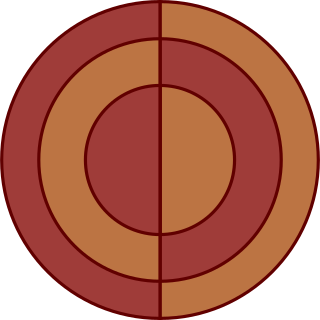 W
WThe Legio I Maximiana was a comitatensis Roman legion, probably created in the year 296 or 297 by the Emperor Diocletian. The legion was named after Maximianus, a colleague of Diocletian. The I Maximiana was formed together with II Flavia Constantia, to garrison the newly created province Thebaidos, in Aegyptus. As well as protect it from neighboring tribes. The legion is also known as Maximiana Thebanorum or Thebaeorum. Since no Legio I Maximiana is listed as being stationed at Thebes in the Notitia Dignitatum, the designation is interpreted more broadly as of the Thebaid in general. The cognomen Maximiana originated from Maximian, Diocletian's colleague. In 354, I Maximiana was in Thrace, in the neighborhood of Adrianople.Thus it is likely that it fought in the Battle of Adrianople, in 378, when emperor Valens was defeated by Goths. According to Notitia Dignitatum, the I Maximiana Thebanorum was still under Thracian command at the beginning of the 5th century, while the I Maximiana was in Philae, under the dux Thebaidos. There exists also a Theban Legion in the legend of Saint Maurice from the 5th century. According to that tradition, this was a legion from Thebes that was ordered to move by Maximian. Thus it is sometimes related to I Maximiana Thebanorum. However, according to tradition, the Theban Legion of Saint Maurice was martyred in 286, while the I Maximiana was not founded until ten years later.
 W
WLegio I Minervia was a legion of the Imperial Roman army founded in AD 82 by emperor Domitian (r. 81–96), for his campaign against the Germanic tribe of the Chatti. Its cognomen refers to the goddess Minerva, the legion's protector. There are still records of the I Minervia in the Rhine border region in the middle of the 4th century. The legion's emblem is an image of goddess Minerva.
 W
WLegio I Parthica was a legion of the Imperial Roman army founded in AD 197 by the emperor Septimius Severus for his forthcoming war against Parthia. The legion's presence in the Middle East is recorded until the early 5th century.
 W
WLegio II Adiutrix, was a legion of the Imperial Roman army founded in AD 70 by the emperor Vespasian, originally composed of Roman navy marines of the classis Ravennatis. There are still records of II Adiutrix in the Rhine border in the beginning of the 4th century. The legion's symbols were a Capricorn and Pegasus.
 W
WLegio II Augusta was a legion of the Imperial Roman army that was founded during the late Roman republic. Its emblems were the Capricornus, Pegasus, and Mars. It may have taken the name "Augusta" from a victory or reorganization that occurred during the reign of Augustus.
 W
WThe Legio II Flavia Constantia was a comitatensis Roman legion, created by Diocletian, probably in the year 296 or 297.
 W
WLegio II Flavia Virtutis was a comitatensis Roman legion, levied by Emperor Constantius II (337–361), together with I Flavia Pacis and III Flavia Salutis.
 W
WLegio II Italica was a legion of the Imperial Roman army.
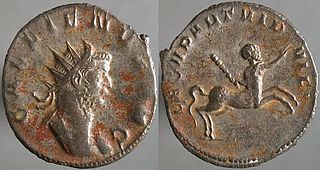 W
WLegio II Parthica was a legion of the Imperial Roman army founded in AD 197 by the emperor Septimius Severus, for his campaign against the Parthian Empire, hence the cognomen Parthica. The legion was still active in the beginning of the 5th century. The legion's symbol was a centaur.
 W
WLegio II Traiana, was a legion of the Imperial Roman army raised by emperor Trajan, along with XXX Ulpia Victrix, for the campaigns in Dacia. Records of the II Traiana Fortis have been recovered from Egypt dating to the middle of the 5th century. The legion's emblem was the demi-god Hercules.
 W
WLegio III Augusta was a legion of the Imperial Roman army. Its origin may have been the Republican 3rd Legion which served the general Pompey during his civil war against Gaius Julius Caesar. It supported the general Octavian in his civil war against Mark Antony. It was officially refounded in 30 BC, when Octavian achieved sole mastery of the Roman empire. In that year, it was deployed in the Roman province of Africa, where it remained until at least the late 4th century AD.
 W
WLegio III Cyrenaica, was a legion of the Imperial Roman army. The legion had its origins among the forces of Mark Antony during the civil wars of late first century BC. In the Imperial period it was stationed in Egypt, where it played a key role in campaigns against the Nubians and Jews. In the first century AD, it was usually located in Arabia Petraea. There are still records of the legion in Syria at the beginning of the 5th century. The legion symbol is unknown.
 W
WLegio III Diocletiana was a comitatensis Roman legion, levied in 296 by Diocletian, from whom the legion took its name. The aim of this unit was to guard the newly re-organized province of Aegyptus, being based in Alexandria. It was created to support II Traiana Fortis, and therefore it took the numeral III.
 W
WLegio III Gallica was a legion of the Imperial Roman army. The cognomen Gallica suggests that its earliest recruits came from veterans of the Gallic legions of Gaius Julius Caesar, a supposition supported by its emblem, a bull, a symbol associated with Caesar. The legion was based for most of its existence at Raphanea, Roman Syria, and was still active in Egypt in the early 4th century.
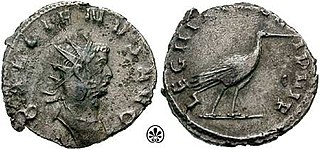 W
WLegio III Italica was a legion of the Imperial Roman army founded in AD 165 by the emperor Marcus Aurelius, for his campaign against the Marcomanni tribe. The cognomen Italica suggests that the legion's original recruits were mainly drawn from Italy. The legion was still active in Raetia and other provinces in the early 5th century.
 W
WLegio IV Flavia Felix, was a legion of the Imperial Roman army founded in AD 70 by the emperor Vespasian from the cadre of the disbanded Legio IV Macedonica. The legion was active in Moesia Superior in the first half of the 5th century. The legion symbol was a lion.
 W
WLegio IV Macedonica, was a legion of the Imperial Roman army founded in 48 BC by Gaius Julius Caesar with Italian legionaries. The legion was disbanded in AD 70 by Emperor Vespasian. The legion symbols were a bull and a capricorn.
 W
WLegio IV Scythica, also written as Legio IIII Scythica, was a legion of the Imperial Roman army founded c. 42 BC by the general Mark Antony, for his campaign against the Parthian Empire, hence its other cognomen, Parthica. The legion was still active in Syria in the early 5th century.
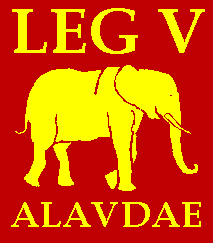 W
WLegio V Alaudae, sometimes also known as Gallica, was a legion of the Roman army founded in 52 BC by the general Gaius Julius Caesar. It was levied in Transalpine Gaul to fight the armies of Vercingetorix, and was the first Roman legion to comprise non-citizens. Historians disagree whether the legion was destroyed during the Batavian rebellion in AD 70, or during the First Battle of Tapae.
 W
WLegio V Iovia was a Roman legion levied by Diocletian in the end of the 3rd century, and was still in service at the beginning of the 5th century. The cognomen of the legion refers to Jupiter, to whom Diocletian was devoted and identified.
 W
WLegio V Macedonica was a Roman legion. It was probably originally levied in 43 BC by consul Gaius Vibius Pansa Caetronianus and Gaius Iulius Caesar Octavianus. It was based in the Balkan provinces of Macedonia, Moesia and Dacia. In the Notitia Dignitatum records from beginning of the fifth century, the legion was still stationed in Dacia, with detachments stationed in the east and Egypt.
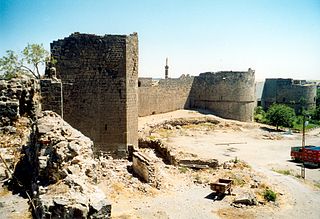 W
WLegio V Parthica was a legion of the Roman Empire garrisoned in Amida, Mesopotamia, established by the Roman emperor Diocletian (284–305), who reorganized the eastern frontier. The legion is described by the historian Ammianus Marcellinus. The cognomen "Parthica" was an archaism, as the Parthian Empire was already replaced by the Sasanian Empire at the time of the establishment of the legion.
 W
WLegio VI Ferrata was a legion of the Imperial Roman army. In 30 BC it became part of the emperor Augustus's standing army. It continued in existence into the 4th century. A Legio VI fought in the Roman Republican civil wars of the 40s and 30s BC. Sent to garrison the province of Judaea, it remained there for the next two centuries.
 W
WLegio VI Herculia was a Roman legion levied by Diocletian in the end of the 3rd century, and was still in service at the beginning of the 5th century. The cognomen of the legion refers to Hercules, to whom Diocletian's colleague, Maximian, was devoted and identified.
 W
WLegio VI Victrix was a legion of the Imperial Roman army founded in 41 BC by the general Octavian. It was the twin legion of VI Ferrata and perhaps held veterans of that legion, and some soldiers kept to the traditions of the Caesarian legion.
 W
WLegio VII Claudia was a legion of the Imperial Roman army.
 W
WLegio VII Gemina was a legion of the Imperial Roman army. It was raised in AD 68 in Hispania by the general Galba to take part in his rebellion against the emperor Nero. "Gemina" means the legion was dedicated to the legendary twin founders of Rome, Romulus and Remus, who were suckled by a she-wolf. The legion was deployed in the city called Legio in AD 74 and remained in Hispania to the end of the 4th century.
 W
WLegio VIII Augusta was one of the oldest legions of the Imperial Roman army.
 W
WLegio IX Hispana, also written Legio VIIII Hispana, was a legion of the Imperial Roman army that existed from the 1st century BC until at least AD 120. The hispanian legion fought in various provinces of the late Roman Republic and early Roman Empire. It was stationed in Britain following the Roman invasion in 43 AD. The legion disappears from surviving Roman records after c. AD 120 and there is no extant account of what happened to it.
 W
WLegio X Equestris, a Roman legion, was levied by Julius Caesar in 61 BC when he was the Governor of Hispania Ulterior. The Tenth was the first legion levied personally by Caesar and was consistently his most trusted. The name Equestris was applied after Caesar mounted legionaries from the Tenth on horses as a ruse in a parley with the German King Ariovistus in 58 BC because he did not trust his Gallic cavalry auxiliaries from the Aedui tribe. Legio X was famous in its day and throughout history, because of its portrayal in Caesar's Commentaries and the prominent role the Tenth played in his Gallic campaigns. Its soldiers were discharged in 45 BC. Its remnants were reconstituted, fought for Mark Antony and Octavian, disbanded, and later merged into X Gemina.
 W
WLegio X Fretensis was a legion of the Imperial Roman army. It was founded by the young Gaius Octavius in 41/40 BC to fight during the period of civil war that started the dissolution of the Roman Republic. X Fretensis is then recorded to have existed at least until the 410s.
 W
WLegio X Gemina, was a legion of the Imperial Roman army. It was one of the four legions used by Julius Caesar in 58 BC, for his invasion of Gaul. There are still records of the X Gemina in Vienna in the beginning of the 5th century. The legion symbol was a bull. Early on in its history, the legion was called X Equestris (mounted), because Caesar once used the legionaries as cavalry.
 W
WLegio XI Claudia was a legion of the Imperial Roman army. The legion was levied by Julius Caesar for his campaign against the Nervii. XI Claudia dates back to the two legions recruited by Julius Caesar to invade Gallia in 58 BC, and it existed at least until the early 5th century, guarding lower Danube in Durostorum.
 W
WLegio XII Fulminata, also known as Paterna, Victrix, Antiqua, Certa Constans, and Galliena, was a legion of the Imperial Roman army. It was originally levied by Julius Caesar in 58 BC, and the legion accompanied him during the Gallic Wars until 49 BC. The unit was still guarding the Euphrates River crossing near Melitene at the beginning of the 5th century.
 W
WLegio XIII Gemina, in English the 13th Twin Legion was a legion of the Imperial Roman army. It was one of Julius Caesar's key units in Gaul and in the civil war, and was the legion with which he crossed the Rubicon in January, perhaps the 10th, 49 BC. The legion appears to have still been in existence in the 5th century AD. Its symbol was the lion.
 W
WLegio XIV Gemina was a legion of the Imperial Roman army, levied by Julius Caesar in 57 BC. The cognomen Gemina (Twinned) was added when the legion was combined with another understrength legion after the Battle of Actium. The cognomen Martia Victrix was added following their service in the Pannonian War c. AD 9 and the defeat of Boudicca in AD 61. The emblem of the legion was the Capricorn, as with many of the legions levied by Caesar.
 W
WLegio XV Apollinaris was a legion of the Imperial Roman army. It was recruited by Octavian in 41/40 BC. The emblem of this legion was probably a picture of Apollo, or of one of his holy animals.
 W
WLegio XVI Flavia firma was a legion of the Imperial Roman army. The legion was created by Emperor Vespasian in 70 from the remains of the XVI Gallica. The unit still existed in the 4th century, when it guarded the Euphrates border and camped in Sura (Syria). The emblem of the legion was a Pegasus, although earlier studies assumed it to have been a lion.
 W
WLegio XVII was a legion of the Imperial Roman army. It was founded by Augustus around 41 BC. The legion was destroyed in the Battle of the Teutoburg Forest. The legion's symbol and cognomen are unknown.
 W
WLegio XVIII was a legion of the Imperial Roman army. It was founded ca. 41 BC by the future emperor Augustus. The legion was, along with two others, destroyed in the Battle of Teutoburg Forest. The legion's symbol and cognomen are unknown.
 W
WLegio XIX was a legion of the Imperial Roman army. It was destroyed in 9 AD in the Battle of the Teutoburg Forest. The emblem of the XIXth legion is unknown but was probably the Capricorn like other legions levied by Augustus.
 W
WLegio XX Valeria Victrix, in English Twentieth Victorious Valeria Legion was a legion of the Imperial Roman army.
 W
WLegio XXI Rapax was a legion of the Imperial Roman army. It was founded in 31 BC by the emperor Augustus, probably from men previously enlisted in other legions. The XXI Rapax was destroyed in 92 by the Sarmatians. The symbol of the legion is thought to have been a capricorn.
 W
WLegio XXII Deiotariana was a legion of the Imperial Roman army, founded ca. 48 BC and disbanded during the Bar Kokhba revolt of 132–136. Its cognomen comes from Deiotarus, a Celtic king of Galatia. Its emblem is unknown.
 W
WLegio XXII Primigenia was a legion of the Imperial Roman army dedicated to the goddess Fortuna Primigenia. Founded in AD 39 by the emperor Caligula for use in his campaigns in Germania, the XXII Primigenia spent much of their time in Mogontiacum up to the end of the 3rd century. The legion's symbols were a Capricorn and the demigod Hercules.
 W
WLegio I Flavia Constantia was a Roman legion, mentioned in the Notitia Dignitatum as a comitatenses unit stationed in the Eastern Empire.